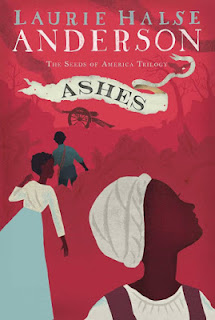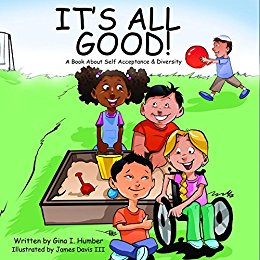 It’s All Good: A Book ABout Self Acceptance & diversity by Gina I. Humber shares a timely and important message about diversity and acceptance, of embracing differences in ourselves and others. It features a sequence of children who happen to be classmates. Each child is different in a visible way and each experiences prejudice and hurtful comments from classmates. Each also participates in subtle “othering” of classmates.
It’s All Good: A Book ABout Self Acceptance & diversity by Gina I. Humber shares a timely and important message about diversity and acceptance, of embracing differences in ourselves and others. It features a sequence of children who happen to be classmates. Each child is different in a visible way and each experiences prejudice and hurtful comments from classmates. Each also participates in subtle “othering” of classmates.
This is one of the aspects which I appreciate in this book. It reminds readers how easy it is to call out others for mistreating us and simultaneously be blind to the biases and “othering” of which we ourselves may be guilty. This awareness is a vital part of addressing and eliminating any biases we–and our children–might hold, many of which we are not even consciously aware of believing. (Sometimes we even hold biases against ourselves!)
By highlighting this subconscious double standard, we help kids to build bridges of acceptance. Once we admit, that we too, have regarded others as less than, it makes it difficult to cry foul. Awareness allows us to move forward to being a conscious force for kindness, respect and equality. And that is a very good thing.
This book offers a wonderful gateway to important conversations about victimization, the collusion of silence and the courage to stand up for self and others. These are big concepts. Very big. They are also essential topics to explore with kids. It’s All Good is a tad heavy-handed. Still, it is a fabulous tool for parents and teachers to share with kids. (And it offers a good reminder to the adults, that they too, have blind spots, biases and feelings of being an outsider.) It also emphasizes the benefit of valuing differences in ourselves and others because differences are precisely what make each person unique.
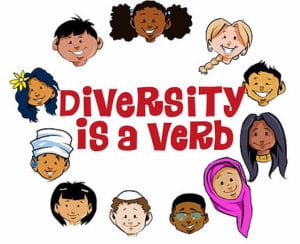 The kindle version of It’s All Good: A Book ABout Self Acceptance & Diversity is available on Amazon and the paperback is sold on her website. Gina’s website is chock full of resources. Please visit and take advantage of her work on Diversity Is A Verb which aims to build “platforms for discussions surrounding topics of: global diversity, self-acceptance, special needs, and body imaging for both young and mature adults. … Diversity is a Verb strives to be a source of empowerment to all involved; improving environmental and social conditions.”
The kindle version of It’s All Good: A Book ABout Self Acceptance & Diversity is available on Amazon and the paperback is sold on her website. Gina’s website is chock full of resources. Please visit and take advantage of her work on Diversity Is A Verb which aims to build “platforms for discussions surrounding topics of: global diversity, self-acceptance, special needs, and body imaging for both young and mature adults. … Diversity is a Verb strives to be a source of empowerment to all involved; improving environmental and social conditions.”
 Adoption-attuned Lens This book invites discussion of adoption as it is one profound way that adoptees differ from their non-adopted family, friends, and classmates. It’s also one of the most common ways adoptees find themselves being “othered.” Ask kids about their how they’ve been belittled for being different. Follow this up with explorations of ways they might have been the perpetrators of bias. Conclude with conversations that help them develop action points of to respond and stand up for themselves as well as others. Embracing differences in ourselves and others is a full-circle approach which requires us to live the Golden Rule. How might this principle benefit families, classrooms, schools and our country?
Adoption-attuned Lens This book invites discussion of adoption as it is one profound way that adoptees differ from their non-adopted family, friends, and classmates. It’s also one of the most common ways adoptees find themselves being “othered.” Ask kids about their how they’ve been belittled for being different. Follow this up with explorations of ways they might have been the perpetrators of bias. Conclude with conversations that help them develop action points of to respond and stand up for themselves as well as others. Embracing differences in ourselves and others is a full-circle approach which requires us to live the Golden Rule. How might this principle benefit families, classrooms, schools and our country?

Gina I. Humber: “Empowering communities and businesses on global diversity and cultural sensitivity.”
http://wp.me/p4vGHg-I6
What Is #DiverseKidLit?
Diverse Children’s Books is a book-sharing meme designed to promote the reading and writing of children’s books that feature diverse characters. This community embraces all kinds of diversity including (and certainly not limited to) diverse, inclusive, multicultural, and global books for children of all backgrounds.
We encourage everyone who shares to support this blogging community by visiting and leaving comments for at least three others. Please also consider following the hosts on at least one of their social media outlets. Spread the word using #diversekidlit and/or adding our button to your site and your diverse posts.
We hope this community will grow into a great resource for parents, teachers, librarians, publishers, and authors! Our next linkup will be Saturday, February 4th and on the first and third Saturdays of every month.
Upcoming Theme
Our theme for the current month is Human Rights. Themes are a suggestion only; all diverse book posts are welcome. If you’re interested, you can start planning now for our upcoming themes …
- February 4th and 18th linkups: Love. Let’s spread our love of diverse books by sharing diverse books about love, families, and relationships.
- March 4th and 18th: Changing Seasons. As we eagerly await the beginning of Spring in the Northern Hemisphere and Autumn in the Southern, let’s share favorite books and resources on the seasons.
Our most-clicked post from last time was a review by Alex of Randomly Reading of Ashes,
book 3 in Laurie Halse Anderson’s Seeds of America trilogy.
#DiverseKidLit is Hosted by:

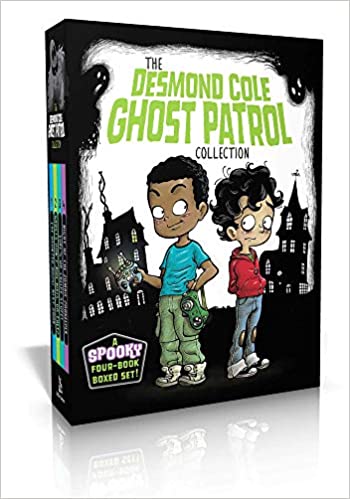




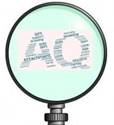 AQ Lens: The inclusionary message of this story will connect with adoptees who lead lives based on the reality that adoption grafts them from one family into another. On some level, they will always reflect the characteristics of their DNA and they will also reflect the nurturing influence of their adoptive family. They become an embodiment of blending both. Their adoptive family will be enriched by the addition of their presence. The storyline offers an opportunity to talk about the emotions the various characters expressed–both the pleasure of being included plus the pain of feeling “othered” and the very real impact that tribal preferences impose. If the child seems open, parents can turn the discussion to the similarities in their child’s life.
AQ Lens: The inclusionary message of this story will connect with adoptees who lead lives based on the reality that adoption grafts them from one family into another. On some level, they will always reflect the characteristics of their DNA and they will also reflect the nurturing influence of their adoptive family. They become an embodiment of blending both. Their adoptive family will be enriched by the addition of their presence. The storyline offers an opportunity to talk about the emotions the various characters expressed–both the pleasure of being included plus the pain of feeling “othered” and the very real impact that tribal preferences impose. If the child seems open, parents can turn the discussion to the similarities in their child’s life.


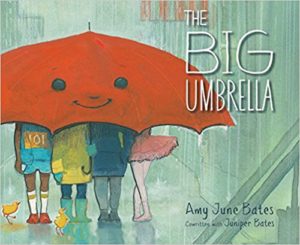
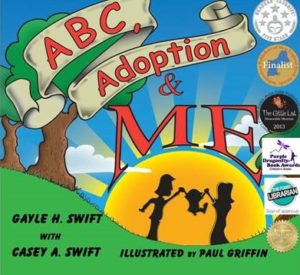
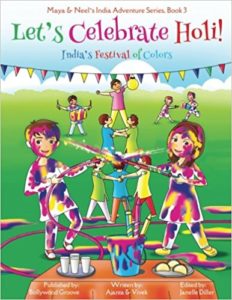
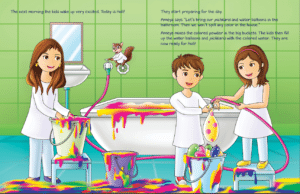 In this book (the third in the series) Maya and her brother Neel visit relatives in India. Their arrival coincides with the festival of Holi which provides the perfect opportunity for the cousins to explain the holiday. As Maya and Neel learn about their heritage and the various ways the people celebrate throughout the many regions of India, readers will also. They will discover that India is an immense country with many states, each of which observes the holiday in unique ways. The book also includes a pronunciation guide which demonstrates the proper ways to speak the Indian words.
In this book (the third in the series) Maya and her brother Neel visit relatives in India. Their arrival coincides with the festival of Holi which provides the perfect opportunity for the cousins to explain the holiday. As Maya and Neel learn about their heritage and the various ways the people celebrate throughout the many regions of India, readers will also. They will discover that India is an immense country with many states, each of which observes the holiday in unique ways. The book also includes a pronunciation guide which demonstrates the proper ways to speak the Indian words.
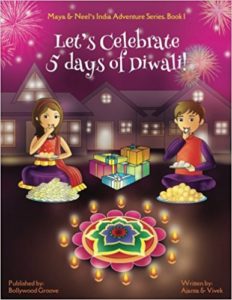
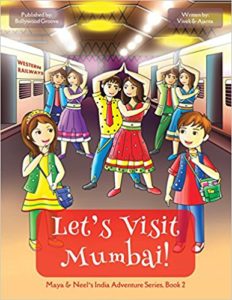
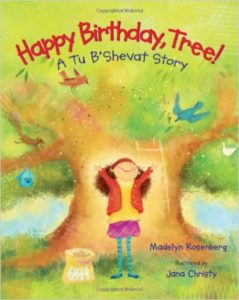 Happy Birthday, Tree: A Tu B’Shevat Story
Happy Birthday, Tree: A Tu B’Shevat Story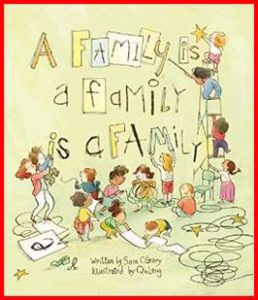
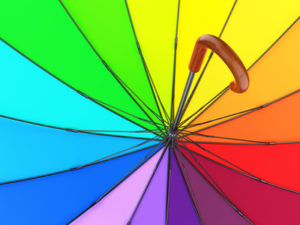
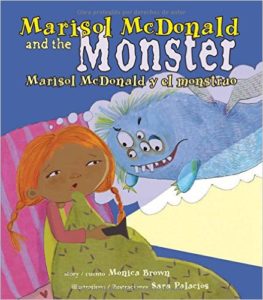
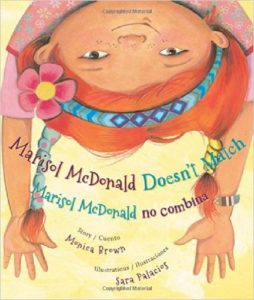 Sara Palacios won a Pura Belpré Illustrator Award Honor for her drawings in
Sara Palacios won a Pura Belpré Illustrator Award Honor for her drawings in 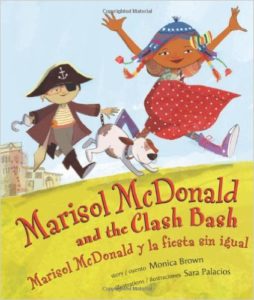
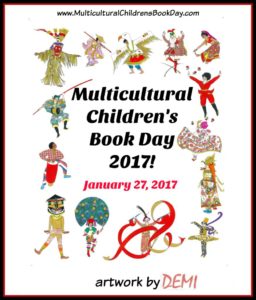

 The kindle version of
The kindle version of 




